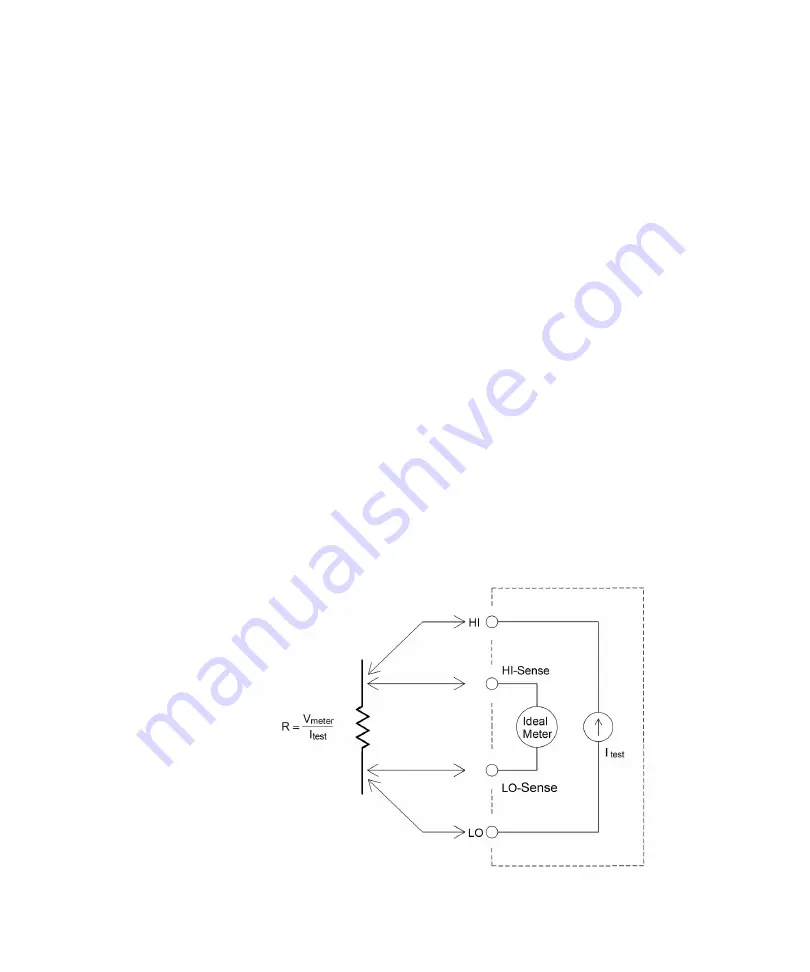
102
34410A/11A User’s Guide
4
Measurement Tutorial
Resistance Measurement Considerations
The multimeter offers two methods for measuring resistance: 2–wire and
4–wire ohms. For both methods, the test current flows from the input HI
terminal and then through the resistor being measured. For 2–wire ohms,
the voltage drop across the resistor being measured is sensed internal to
the multimeter. Therefore, test lead resistance is also measured. For
4–wire ohms, separate "sense" connections are required. Since no current
flows in the sense leads, the resistance in these leads does not give a
measurement error.
The errors mentioned earlier in this chapter for dc voltage
measurements also apply to resistance measurements. Additional error
sources unique to resistance measurements are discussed on the
following pages.
4
–
Wire Ohms Measurements
The 4–wire ohms method provides the most accurate way to measure
small resistances. Test lead resistances and contact resistances are
automatically reduced using this method. Four–wire ohms is often used in
automated test applications where resistive and/or long cable lengths,
numerous connections, or switches exist between the multimeter and the
device–under–test. The recommended connections for 4–wire ohms
measurements are shown below.
See also
Summary of Contents for 34410A
Page 1: ...Agilent Technologies Agilent 34410A 11A 6 Digit Multimeter User s Guide...
Page 6: ...6 34410A 11A User s Guide...
Page 12: ...12 34410A 11A User s Guide...
Page 34: ...34 34410A 11A User s Guide 1 Quick Start...
Page 96: ...96 34410A 11A User s Guide 3 Remote Interface Configuration...
Page 106: ...106 34410A 11A User s Guide 4 Measurement Tutorial...
Page 120: ...120 34410A 11A User s Guide 4 Measurement Tutorial...
Page 140: ...140 34410A 11A User s Guide 5 Specifications...
















































